Piazza San Marco (or St Mark’s Square) is easily one of my favourite spaces in Venice.
I’ve hustled through slow walking crowds in the summer, soaked up how the July sun reflects off of the mosaics of St Mark’s Basilica, posed for a million photographs, drunkenly spilled out into the Piazza after one too many Prosecco and waltzed (very badly) beneath the Campanile… I’ve even woken up at 5am and joined the pro photographers (and the street sweepers) to watch the sun come rise over the lagoon.
Not only is St Mark’s Square the largest public space in Venice, it was once called “the drawing room of Europe” by Napoleon. Often the first stop for tourists visiting the city of Venice, its the epicentre for some of the most prestigious buildings in the city including the Basilica di San Marco (St Mark’s Basilica), the Campanile (bell tower), Torre dell’Orologio (clock tower) and the Palazzo Ducale (Doge’s Palace). In fact, up until 1846, when the Santa Lucia train station opened in Cannaregio, St Mark’s would have been the visitor’s first view of the city as passenger ships disembarked along the busy waterfront in front of the Doge’s Palace.
And what a view.
It may be beautiful, but it’s also steeped in history and I during my guided Instagram tours of the city, it’s my favourite thing to chat about. With that in mind, here’s 9 things you didn’t know about St Mark’s Square.
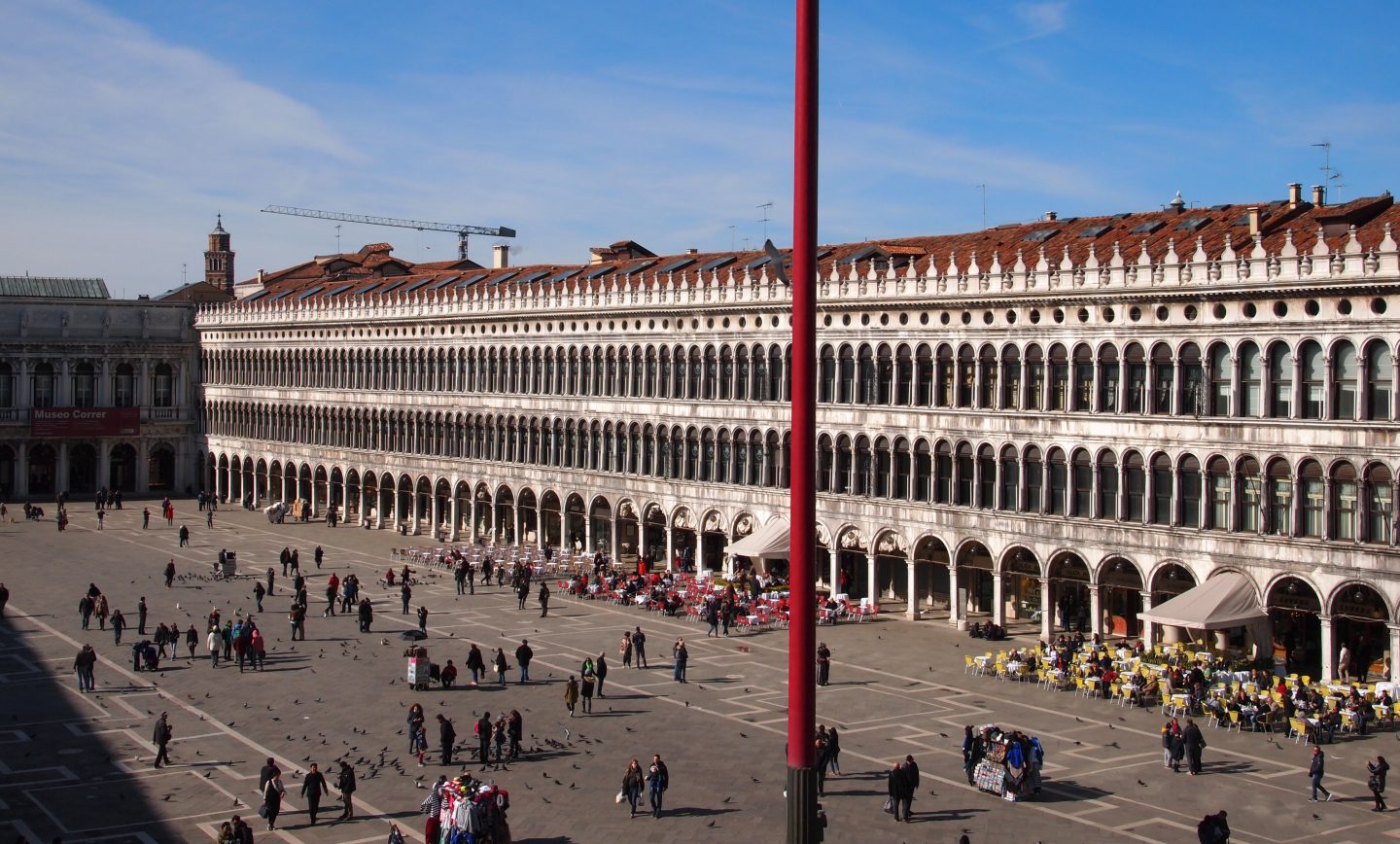
1.
When most people talk about St Mark’s Square they talk about the whole space between the Museo Correr, St Mark’s Basilica and the edge of the lagoon in front of the Doge’s Palace. This entire space is actually made up of three separate squares, the largest of three, a trapezium shape with a length of 176m being the infamous Piazza San Marco. The small square to the side of the Basilica is the Piazzetta dei Leoncini (named after the two lion statues) and the one with the 2 columns in front of the lagoon is the Piazzetta San Marco. St Mark’s Square is the only square in Venice to be called a Piazza with the other 135 smaller public squares in Venice (such as Campo di Santo Stefano, Campo di Santa Margherita) being campo or campi (plural).
2.
The Campanile stands 323 foot above the Piazza and has been used as a watchtower as well as being home to the 5 bells that can be heard throughout San Marco. Open to the public, the view from the top of the Campanile costs 8euro and gives amazing views of the red rooftops of the city on a clear day. Originally built in the 9th century, the Campanile faced multiple lightning strikes, fire and restorations and following its collapse on 14th July 1902, was rebuilt between 1903 and 1912 using as much of the old building as possible to rebuild it “com’era, dov’era”, as it was, where it was (with safer techniques!). Although the collapse buried the balcony of the Basilica in rubble, the church itself was left undamaged and the only the casualty was the caretaker’s cat.
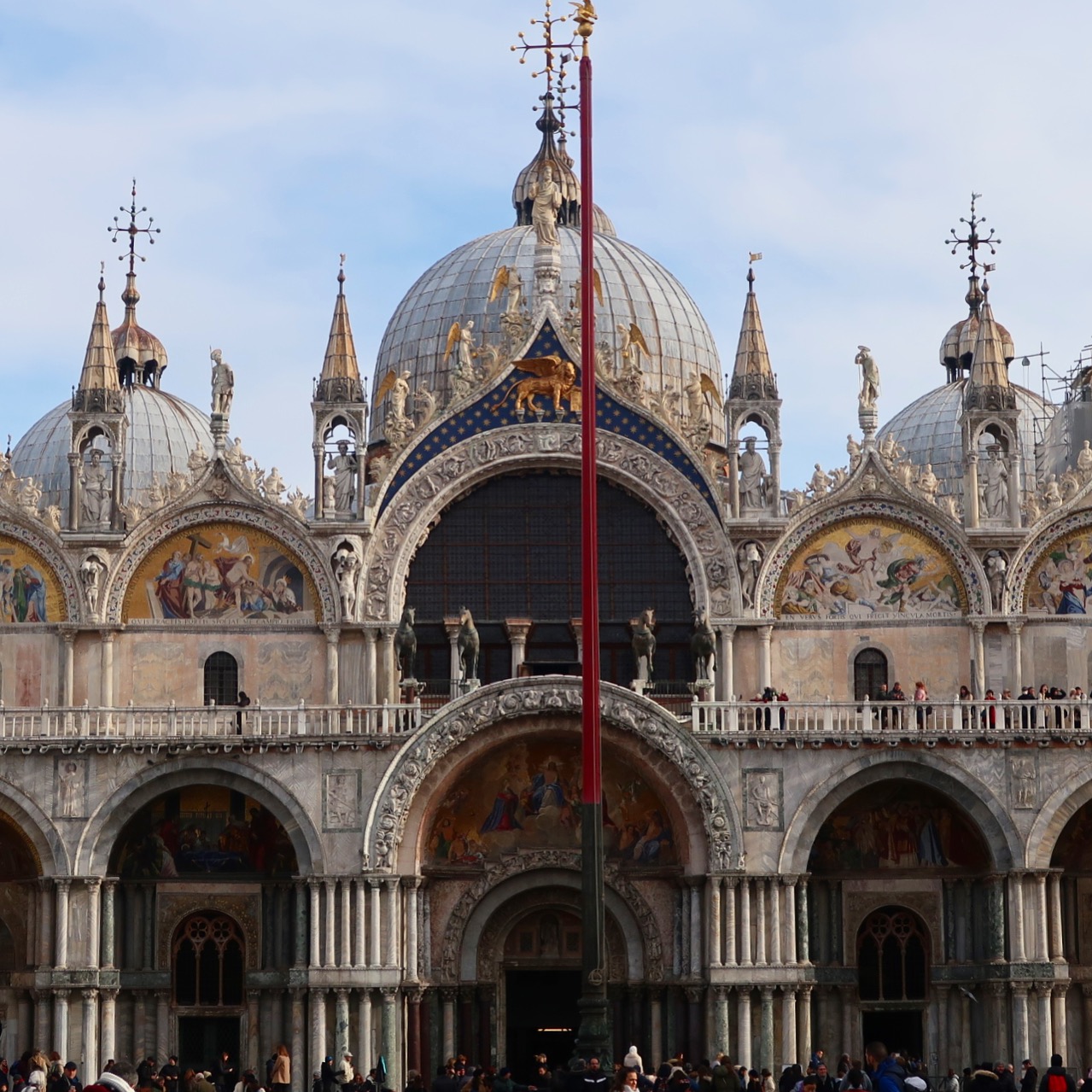
3.
The building of the first St Mark’s Basilica began in 9th Century (828) to house and honour the remains of St. Mark the Evangelist from Alexandria, Egypt. Saint Mark replaced Saint Theodore as the Patron Saint of the city after Venetian merchants smuggled the remains out of Egypt by sneaking them past the Muslim guards by hiding them under layers of pork. When returning to the city by sea, a storm almost drowned the graverobbers and their cargo but it’s said that St Mark himself appeared to the captain and told him to lower the sails and the ship (& the remains) were saved. The entire story is pictured on the 13th-century mosaic above the left door as you enter the Basilica. It was originally the private chapel of the Doge, as San Pietro di Castello was at that time the official cathedral of Venice. When the economic center moved towards the Rialto and San Marco area, the San Marco basilica became the official cathedral of the city in 1807.
TIP: Entry to St Mark’s Basilica is free but be prepared to queue! Head there early morning or late in the afternoon (closing time is 5pm) to try and avoid the crowds.
4.
The three flagpoles directly in front of St Mark’s Basilica are original ship’s masts and represent the 3 kingdoms conquered by Venice: Crete, Cyprus and the Peloponese. During Napoleon’s rule, they were almost demolished as it was said they were considered a symbol of tyranny and to save them, a white lie was told and instead, they referred to Freedom, Virtue and Equality. Nowadays, the flag of the Republic of Venice, the Italian flag and the European flag fly from them.
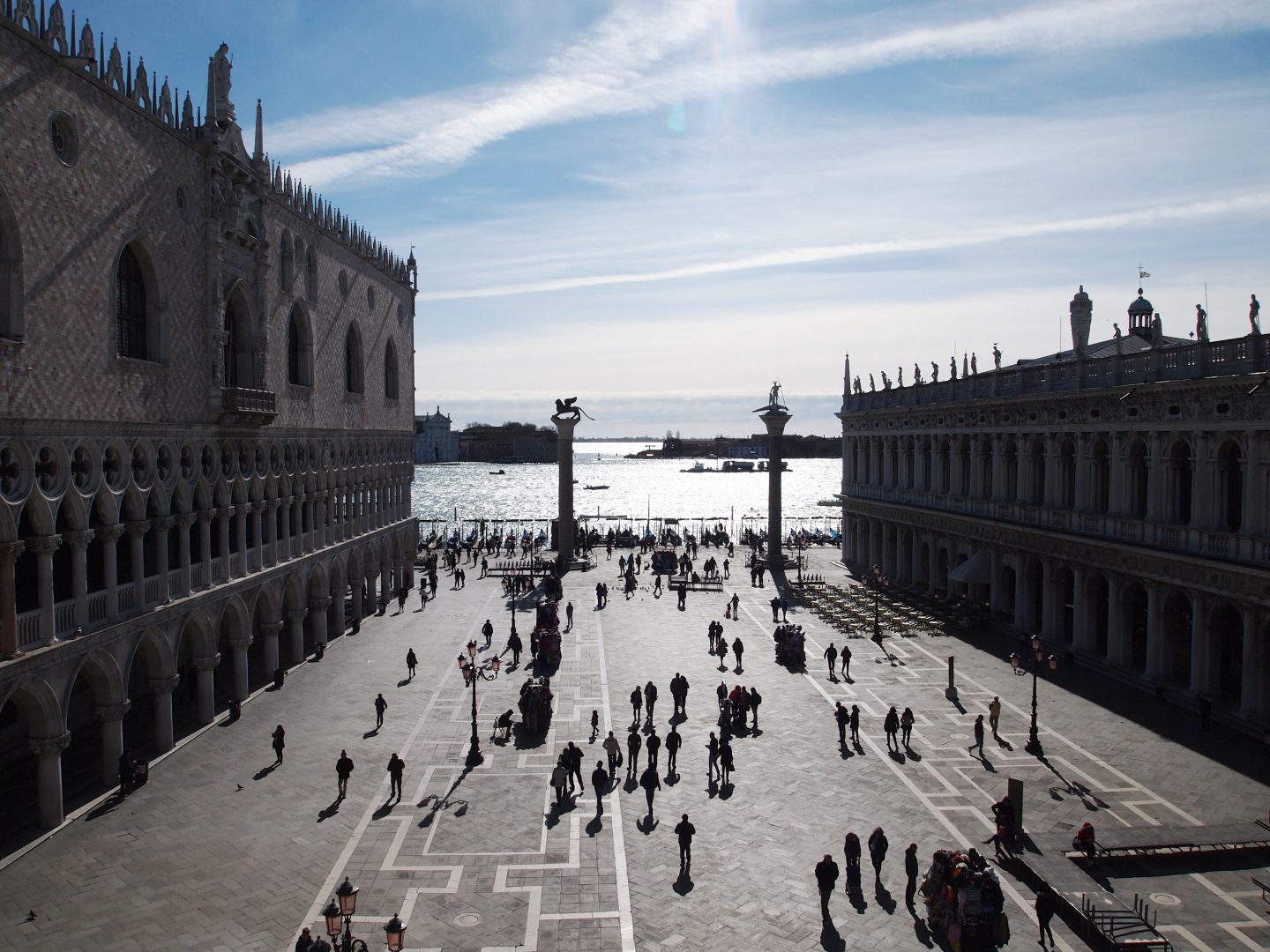
5.
If you study the columns of the Doge’s Palace, you’ll notice two pink columns where he Doge (chief magistrate of Venice) would announce death sentences from between (the pink colour symbolising blood). The executions would then take place between the 2 columns topped by statues of San Teodoro and the winged lion of San Marco. From the position between the columns, the condemned had a view of the clock tower to see the exact hour of their death. For this reason, superstitious Venetians make it a point not to walk between the two columns (trovarsi tra Marco e Tadoro) because it’s considered to be bad luck.
FUN FACT: Some believe however that there was supposed to be a third column. Apparently, three columns were delivered by boat to Venice in 1172 but during the process of moving them from the boat to the shore, one column fell overboard into the lagoon.
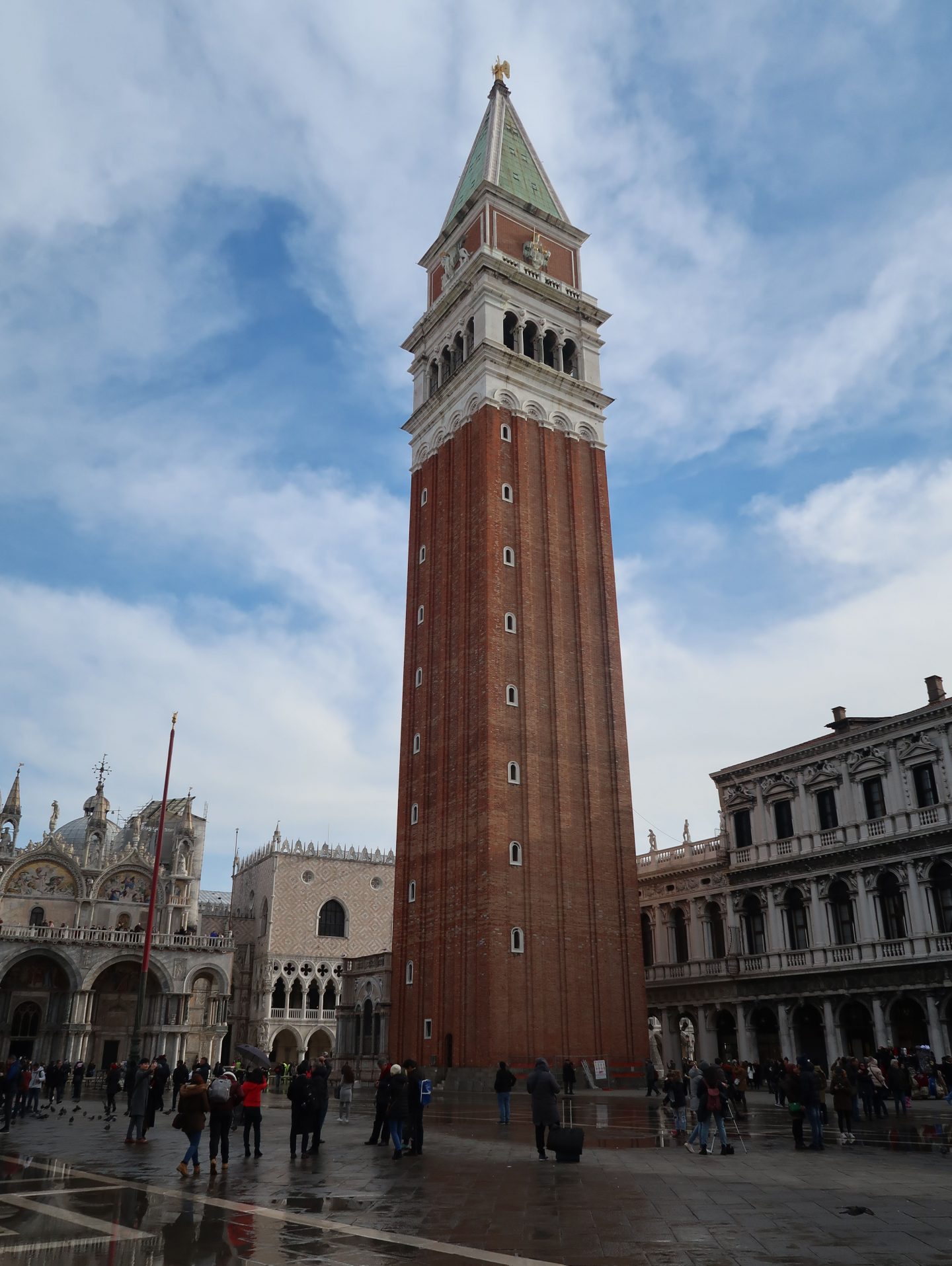
6.
The best views of the square aren’t from the Campanile itself, instead, hop on a Vaperetto (public water bus) and headed across the lagoon to the small island of San Giorgio Maggiore. The Palladian building that you can admire from the waterfront of Piazzetta San Marco is beautiful in its own right, but for 6 euro the 360 views from the viewing platform of the bell tower
7.
The arcades of the St Mark’s Square are lined with shops, restaurants and cafes. The most famous of the cafes on the Piazza is Caffe Florian. Considered to be the oldest café in Europe, the elegantly decorated cafe with mirrored rooms and painted ceilings became a meeting point for the likes of Charles Dickens, Lord Byron and Giacomo Casanova (probably because it was the only coffee house that allowed women in). Opened on December 29, 1720 by Floriano Francesconi, Caffe Florian was originally known as ‘Alla Venezia Trionfante’ (For the Triumph of Venice) but after being affectionally referred to as ‘Caffè Florian’ in honour of its owner, the name was changed. Yes, Cafe Florian is pricey, two coffees will set you back around 20 euros but the opulence, service, rich history and outdoor concerts are something that should be experienced at least once.
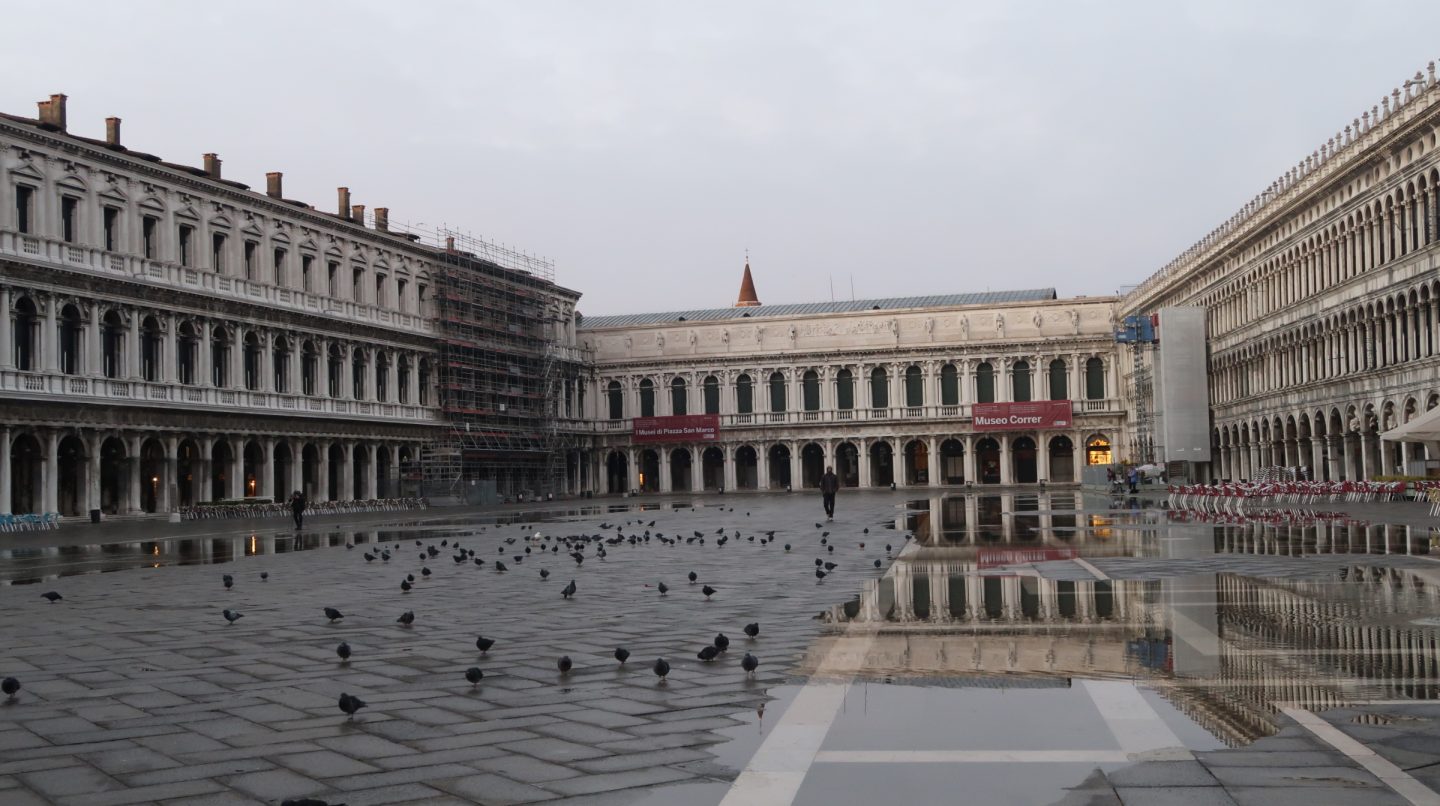
8.
St Mark’s Square is prone to flooding as one of the lowest points of in Venice and with the cities problems with rising tides (known as acqua alta) it’s always the first area to flood. Contrary to what some may think, the water doesn’t come directly from the lagoon onto the square, instead drainage means that water pools in various places and comes from directly underneath the square. Acqua alta, meaning “high water” is more prone during the winter time and occurs due to a combination of the tides, strong southern wind, and the periodic movement of sea waters. Water reaching 110 cm covers almost 14% percent of Venice and higher tides of 140cm+ can flood almost half of the city.
DID YOU KNOW: During acqua alta, elevated wooden walkways are erected to avoid soggy feet. Alternatively, most street sellers will be at the ready with plastic shoe covers or wellies!
9.
If you’re not au fait with birds, St Mark’s Square may not be the place for you. It’s pigeon paradise and you’ve most likely seen many a picture of tourists posing with their feathered friends. Since the introduction of #EnjoyRespectVenezia feeding of the birds in St Mark’s Square is illegal and comes with a hefty fine, as does sitting on the steps surrounding the Piazza.
For the Best View of St Mark’s Square…
Enter the Piazza (for the WOW moment) is to enter through the Museo Correr off of Calle Larga Ascenione. Seeing the 5 domes of the Basilica appear beneath the arches, the Campanile and its golden Arch Angel stretching up into the sky and the pastel Gothic facade of the Doge’s Palace in the distance. It’s breath taking.
0 Comments